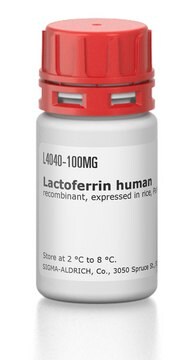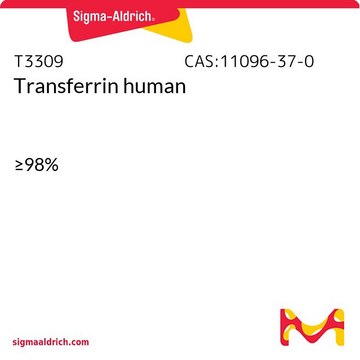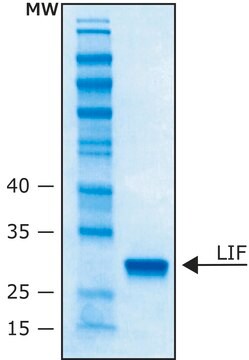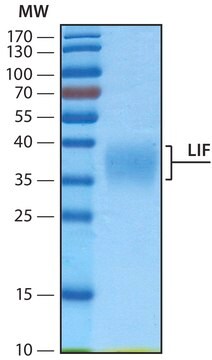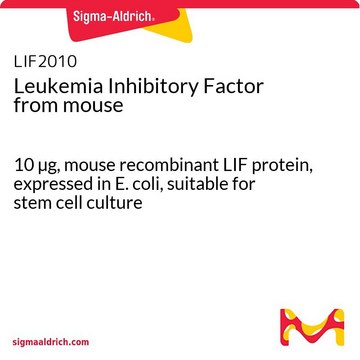L9545
Czynnik hamujący białaczkę ludzki, nie zawiera składników zwierzęcych
recombinant, expressed in rice, 500 μg/mL
Synonim(y):
Leukemia Inhibitory Factor human, LIF, rLIF
About This Item
Polecane produkty
rekombinowane
expressed in rice
Próba
>95% (SDS-PAGE)
siła działania
>1 x 108 units/mg ED<sub>50</sub>
stężenie
500 μg/mL
metody
cell culture | mammalian: suitable
zanieczyszczenia
<0.05 EU/μg endotoxin
numer dostępu UniProt
Warunki transportu
dry ice
temp. przechowywania
−70°C
informacje o genach
human ... LIF(3976)
Szukasz podobnych produktów? Odwiedź Przewodnik dotyczący porównywania produktów
Działania biochem./fizjol.
Postać fizyczna
Kod klasy składowania
10 - Combustible liquids
Temperatura zapłonu (°F)
Not applicable
Temperatura zapłonu (°C)
Not applicable
Wybierz jedną z najnowszych wersji:
Certyfikaty analizy (CoA)
Nie widzisz odpowiedniej wersji?
Jeśli potrzebujesz konkretnej wersji, możesz wyszukać konkretny certyfikat według numeru partii lub serii.
Masz już ten produkt?
Dokumenty związane z niedawno zakupionymi produktami zostały zamieszczone w Bibliotece dokumentów.
Klienci oglądali również te produkty
Produkty
Czynnik hamujący białaczkę (LIF) jest czynnikiem wzrostu komórek macierzystych stosowanym do hodowli in vitro pluripotencjalnych mysich embrionalnych komórek macierzystych (komórek ES).
Nasz zespół naukowców ma doświadczenie we wszystkich obszarach badań, w tym w naukach przyrodniczych, materiałoznawstwie, syntezie chemicznej, chromatografii, analityce i wielu innych dziedzinach.
Skontaktuj się z zespołem ds. pomocy technicznej

